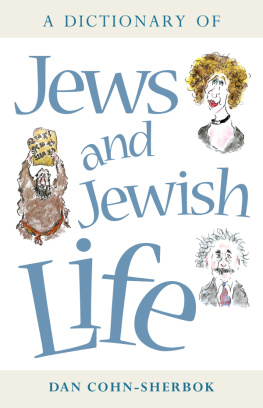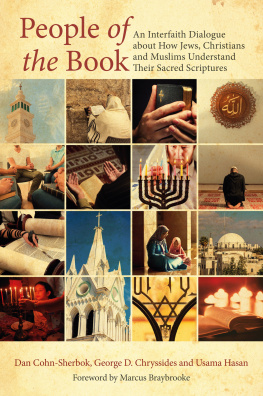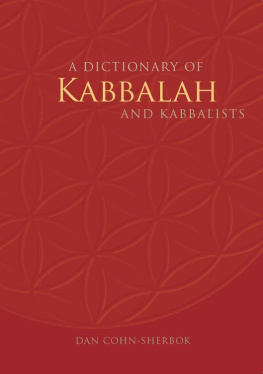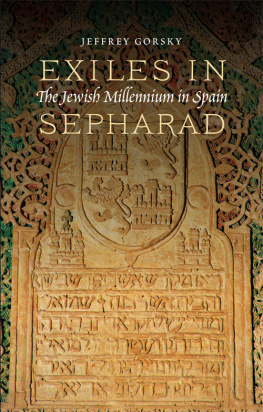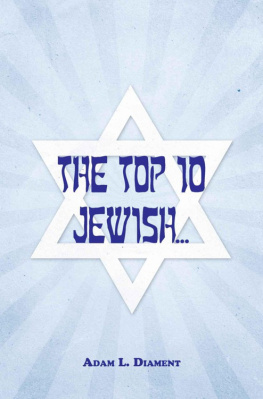
p.i
A very useful and easy-to-read dictionary for anyone interested in Jews and Judaism. Dan Cohn-Sherbok has produced an accessible and impressive one-volume dictionary which will help anyone who wants to turn to a single source for brief definitions of Jewish customs, practices, religion and history as well as Jewish biographies.
Ed Kessler, Founder Director of the Woolf Institute, and Fellow of St Edmunds College, Cambridge.
A lively and informative source of information, very useful for anyone working in Jewish Studies.
Oliver Leaman, Professor of Philosophy, University of Kentucky.
An invaluable, detailed but handy guide to the Jewish religion, history and major figures and events. Punctuated brilliantly by hilarious Jewish jokes, illustrating the famous community humour in poking fun at itself.
Imam Dr Usama Hasan, London, UK
This is an excellent dictionary of important concepts, events, and individuals in Jewish life and history. It provides cogent and concise information about the Jewish people, which will be very useful to scholars, students, and interested readers.
William D. Rubinstein, Emeritus Professor, University of Wales, Aberystwyth
p.iii
A Dictionary of Jews
and Jewish Life
Dan Cohn-Sherbok

p.iv
First published 2018
by Impress Books Ltd
Innovation Centre, Rennes Drive, University of Exeter Campus, Exeter EX4 4RN 2018
Dan Cohn-Sherbok 2018
All rights reserved. No part of this book may be reprinted or reproduced or utilised in any form or by any electronic, mechanical, or other means, now known or hereafter invented, including photocopying and recording, or in any information storage or retrieval system, without permission in writing from the publishers.
British Library Cataloguing in Publication Data
A catalogue record for this book is available from the British Library
ISBN 978 19112932 17
Typeset in Plantin
by Swales and Willis Ltd, Exeter, Devon
Printed and bound in England by imprintdigital.net
All illustrations are the work of Dan Cohn-Sherbok
p.v
For Lavinia
p.vii
Preface
For more than thirty years I have taught courses in Jewish studies at universities in the United Kingdom. During this time I have frequently directed students to such multi-volume encyclopedia of Judaism as the Jewish Encyclopedia and the Encyclopaedia Judaica . These vast repositories of material provide a wealth of information about all aspects of Jewish life and thought. I also directed them to use the web to find material related to their queries. Nonetheless, very often students particularly those with more general interests find such reference sources overwhelming.
Aware of this difficulty, I suggested they look at a number of single-volume encyclopedia and dictionaries of Judaism, but many of these works failed to meet their needs since they were highly selective in their choice of entires. Increasingly I came to see that what was needed was a single-volume comprehensive dictionary which contains basic information about Judaism and the Jewish people. Such a handy reference book would not take the place of standard multi-volume reference works or the Internet, but it could serve as a first point of entry into the Jewish world.
This volume, A Dictionary of Jews and Jewish Life , is designed to fill a gap in the types of reference books available to students, as well as to teachers and more general readers. The book is approximately 250,000 words in length and contains thousands of entries. Most are short since the dictionary aims to provider readers with a vast array of information in concise, clear and accessible form. Although all aspects of Jewish life and civilisation are covered, my main criterion for inclusion has been reference worthiness. My intention is that this volume should provide the type of information most commonly sought by students of Jewish life and thought.
p.viii
A dictionary about Jews and Judaism would not be complete without Jewish humour. Through the centuries Jews have been making jokes about themselves, and it is a central dimension of Jewish life. For this reason, this volume also includes a range of Jewish jokes at the beginning of each letter. Without them the dictionary would not give a full picture of the Jewish world. In addition, scattered throughout the book are a number of cartoons which are designed to reflect the humorous dimensions of the faith.
p.ix
Acknowledgements
I would like to acknowledge these sources from which I obtained information: Geoffrey Wigoder, The New Standard Jewish Encyclopedia, W.H. Allen, 1977; Jewish Encyclopedia, Funk and Wagnalls, 19011905; Encyclopedia Judaica, Keter, 1972; Yacov Newman and Gabriel Sivan, Judaism AZ: Lexicon of Terms and Concepts, Department for Torah Education and Culture in the Diaspora of the World Zionist Organization, 1980; Raphael Judah Zwi Werblowsky and Geoffrey Wigoder, eds, The Encyclopedia of the Jewish Religion , Phoenix House, 1967; Glenda Abrahamson, The Blackwell Companion to Jewish Culture , Blackwell, 1989; Glenda Abrahamson, Encyclopedia of Modern Jewish Culture , Routledge, 2004; Geoffrey Wigoder, ed., The Encyclopedia of Judaism, Macmillan, 1989; David Bridget and Samuel Wolk, eds., The New Jewish Encyclopedia, Behrman House, 1976; Encyclopedia Judaica , Macmillan, 2006; Leo Rosen, The Joys of Yiddish, W.H. Allen, 1968; Michael Kransy, Let There Be Laughter, William Morrow, 2016 ; David Minkoff, The Ultimate Book of Jewish Jokes, Robson Books, 2004. I would also like to thank the publisher Richard Willis for his support, and the editor George Warburton for his help.
p.xi
Jewish History
Jews in the Ancient World
The history of the Jewish people began in Mesopotamia where successive empires of the ancient world flourished and decayed before the Jews emerged as a separate people. The culture of these civilisations had a profound impact on the Jewish religionancient Near-Eastern myths were refashioned to serve the needs of the Hebrew people. It appears that the Jews emerged in this milieu as a nation between the 19th and 16th centuries BCE . According to the Bible, Abraham was the father of the Jewish people. Initially known as Abram, he came from Ur of the Chaldees. Together with his family he went to Haran and subsequently to Canaan, later settling in the plain near Hebron. Abraham was followed by Isaac and Jacob, whose son Joseph was sold into slavery in Egypt. There he prospered, becoming a vizier in the house of Pharaoh. Eventually the entire Hebrew clan moved to Egypt, where they remained and flourished for centuries until a new Pharaoh decreed that all male Hebrew babies should be put to death.
To persuade Pharaoh to let the Jewish people go, God sent a series of plagues upon the Egyptians. After this devastation, Moses, the leader of his people, led his kinsfolk out of Egypt. After wandering in the desert for 40 years, the Hebrews finally entered into the land that God had promised them. Under Joshuas leadership, the Hebrews conquered the existing inhabitants. After Joshuas death the people began to form two separate groups. At first there were 12 tribes named after the sons of Jacob: Joseph, Benjamin, Levi, Simeon, Reuben, Judah, Issachar, Zebulun, Dan, Naphtali, Gad and Asher. When Levis tribe became a special priestly group excluded from this territorial division, the tribe of Joseph was divided into two and named after his sons, Ephraim and Manasseh. During this period the Hebrews were ruled over by 12 national heroes who served successively as judges. In Scripture the sagas of the major judges (Othniel, Ehud, Deborah, Gideon, Jephthah and Samson) are recounted at length.
Next page
